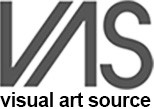'Modern Voices' spans more than one hundred years of 'speaking' through art. Both Leonard Edmondson (1916-2002) and Peter Krasnow (1887-1979) created unique bodies of work that are distinctly individual.
Born in Sacramento, California, Leonard Edmondson earned BA and MA degrees in Fine Arts at the University of California, Berkeley, He briefly taught there until World War II demanded his presence! After serving in the Army between 1942 and 1946, he came south to teach at Pasadena City College. The next forty years brought professorships at Otis Art Institute, Cranbrook, Colorado College and many other institutions until he retired as Chairman of Printmaking department at CSULA in 1986. Actually, he never did 'retire' since he was painting and printmaking until his closing year in 2002. Edmondson was widely known for his work as a printmaker – but he was also a painter in oils, acrylics and watercolors. His life in art had a connecting thread through the classroom and printmaking.
In addition, invitational exhibitions were also demanding of his attention – as a juror, as a symposium panelist or as a participant in one–person, competitive, annual and group shows...from the Whitney, the Brooklyn and the Metropolitan Museums in New York to LACMA, Oakland, Pasadena, Long Beach, Santa Barbara, FAMSF, La Jolla, Laguna Art Museums in California, from the Library of Congress and the American Academy of Arts to international venues in Japan, Switzerland, Brazil and Italy. His techniques fostered admiration and imitation, leading to 'how–to' books (Etching, CSULA Press, 1973), prizes and commissions.
By 1950, Edmondson's work evolved from figuration to abstraction. His aesthetic vocabulary refers to 'almost remembered' forms, feelings and spaces. Often working from only one copper plate, he developed textural effects and employed viscosity etching techniques. Fingerprints and handprints often entered the compositions. Edmondson coupled topographical suggestions with dynamic surreal and abstract imagery.
Leonard Edmondson wrote: "I have found satisfaction in the spontaneous, often compulsive, act of drawing and painting." Edmondson's fluid line and layered color bring rhythms and space, as seen in Surreal Mosaic and Figures of Reflection. His 1973 book 'Etching' is still used in curricula internationally.
Peter Krasnow landed on our shores in 1907, challenging his conservative family in Russia. He moved to Chicago, worked as a maintenance man at the Art Institute and enrolled in the Art Institute School of Art. After graduating in 1916, he married and moved to New York in 1919, where the 'art scene' was earning attention.
In New York he joined the 'starving artists brigade', becoming a valued friend of many – especially Edward Weston. Weston encouraged him to consider Los Angeles for a future in art. By 1923, Krasnow and his bride drove across the United States (visiting briefly with Mabel Dodge in Taos, New Mexico) to build a house next to Weston's near the Los Angeles river and commence a lifetime of creativity.
Initially, in the 1920s, he developed a reputation for portraiture; his palette was influenced by classical form and rich saturation of color. Painting and some woodcarving were chosen techniques, with excursions into lithography and relief prints before 1930.
Awarded a Guggenheim grant in 1930, Krasnow and his wife moved to the Dordogne region in France, where he turned to watercolors and monoprints… until 1934, when political instability and his friend, Edward Weston, dictated a return to California. Once back in California, his wife – Rose – insisted upon a garden, so Peter began to fell some of the trees in his backyard that had flourished over four years of neglect. Peter recognized the organic nature within the tree forms and began a series of large free–standing sculptures, some segmented, that he called 'demountables'. His 'demountables' and organic carved wood sculptures of the 1930s invite physical contact! He returned to painting by the early 1940s, abandoning previous imagery in favor of more architectural abstractions – The 1944 issue of 'Arts and Architecture' magazine featured Krasnow's paintings and sculpture on its cover, and he shifted into a 'high–key' palette of sunshine and light. Over that decade, Krasnow's compositions developed his unique style that referred obliquely to his Jewish heritage through abstraction.






